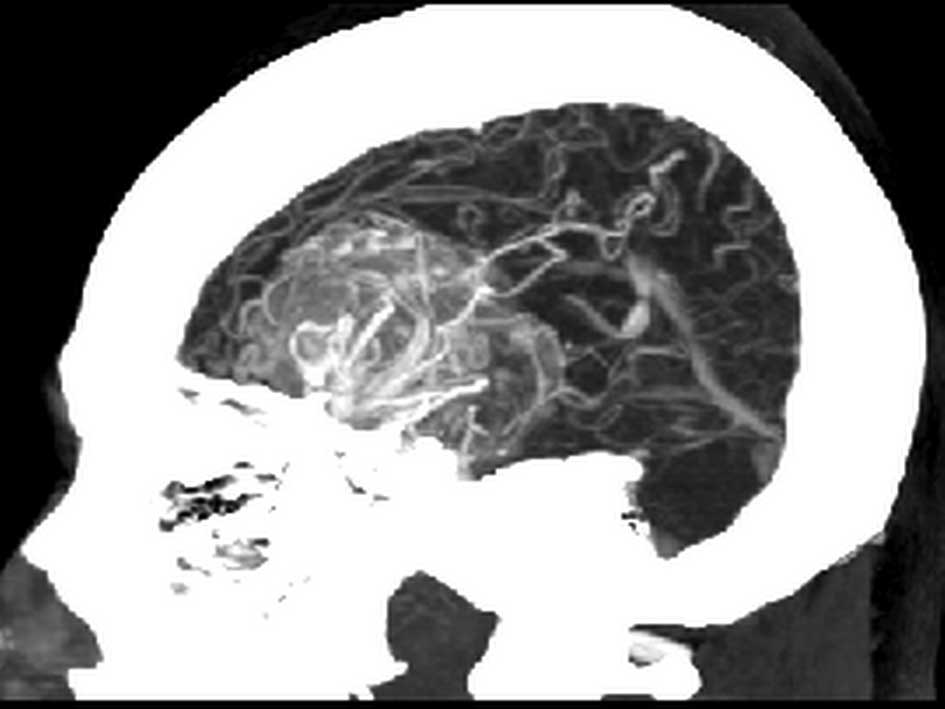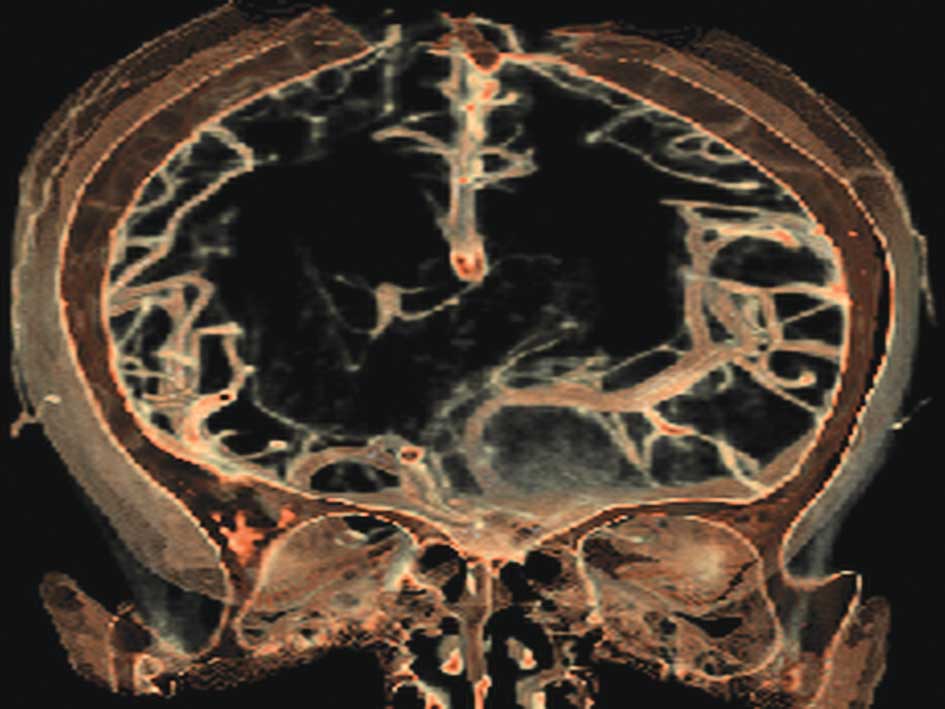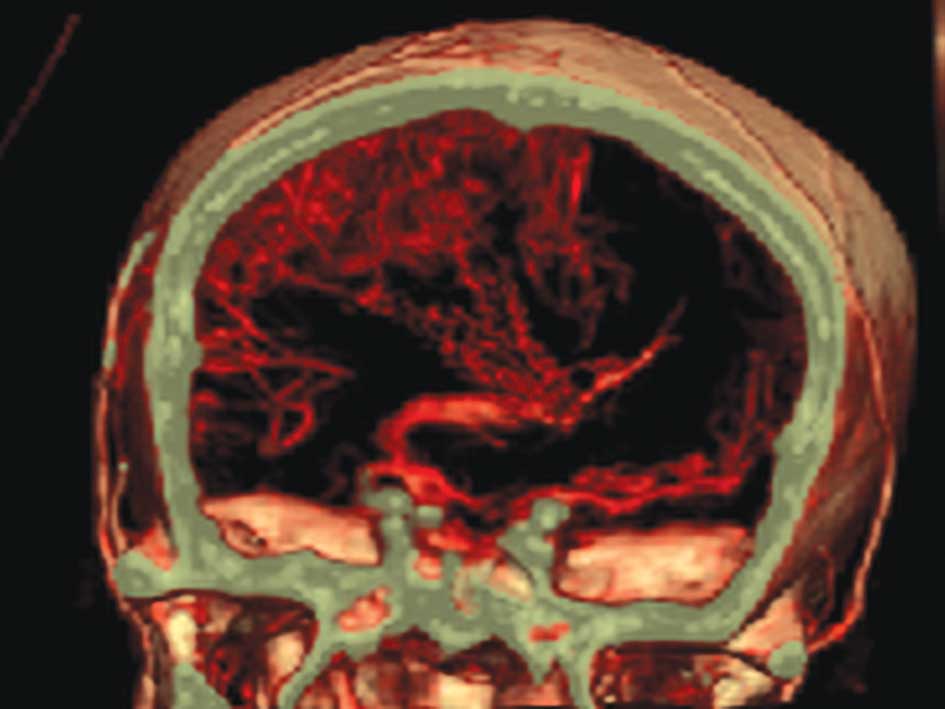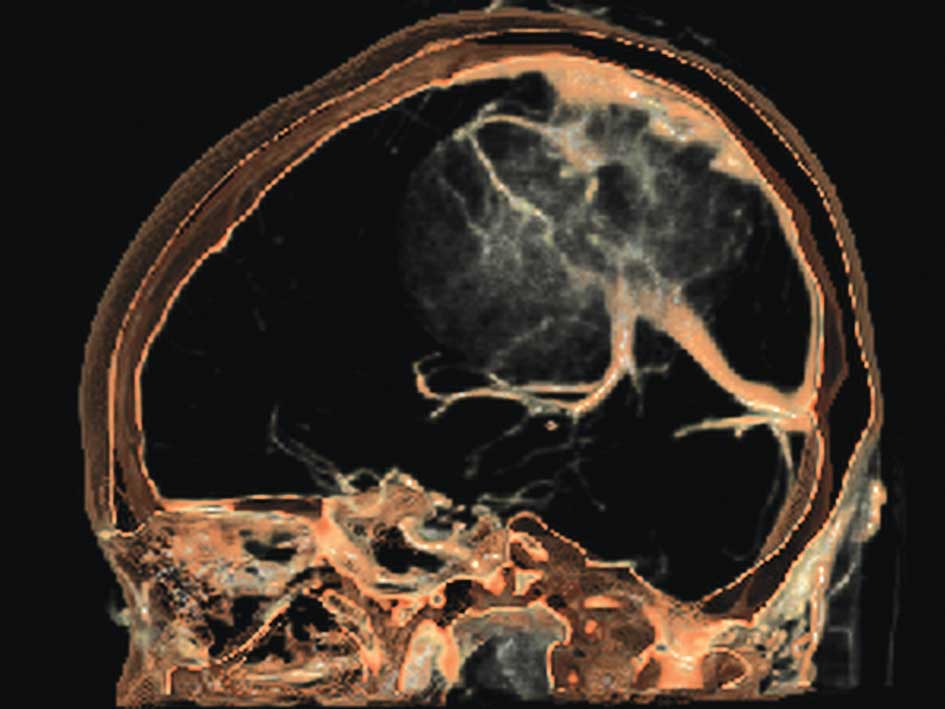Comparative study of multi-slice CT angiography with digital subtraction angiography in the blood supply of meningiomas
- Authors:
- Published online on: September 21, 2011 https://doi.org/10.3892/etm.2011.354
- Pages: 31-36
Metrics: Total
Views: 0 (Spandidos Publications: | PMC Statistics: )
Total PDF Downloads: 0 (Spandidos Publications: | PMC Statistics: )
Abstract
Evaluation of multi-slice CT angiography (MSCTA) and digital subtraction angiography (DSA) was made through the comparison of the two methods in detecting the blood supply of meningiomas, providing further clues for the improved application of MSCTA and DSA in the blood supply of meningiomas. In this study, 20 patients with meningiomas underwent CT angiography by 16-slice spiral CT and inspection 1 week later using DSA. The blood supply of the meningiomas (including the tumor feeding arteries, draining veins, venous sinuses, vessels around the tumor and skull-shaped images, such as comparative evaluation) was compared. The results showed that MSCTA and DSA inspection clearly depicted tumor feeding arteries, draining veins and venous sinuses in all 20 patients. DSA was slightly more effective than MSCTA in displaying fine branches, and DSA had obvious advantages over MSCTA in displaying vessels near the skull. In the display of the tumor's compression and pushing over its peripheral vasculature, MSCTA had the three-dimensional advantage, although in displaying parasagittal sinus meningiomas, it may overestimate the presence of venous sinus invasion due to the impact of bone structure. This does not affect DSA. MSCTA accurately assesses the relationship between the tumor and the bone, and provides three-dimensional images for the pre-operative simulation of surgical approaches. Taken together, MSCTA and DSA are both able to provide important information, such as accurate visualization of tumor-feeding arteries, draining veins and venous sinuses, with high consistency. MSCTA is more advantageous in the depiction of three-dimensional relationships between the tumor and peripheral vessels and skull. Compared to DSA, MSCTA is non-invasive, faster and less costly.













